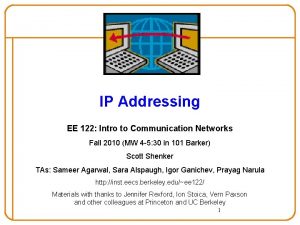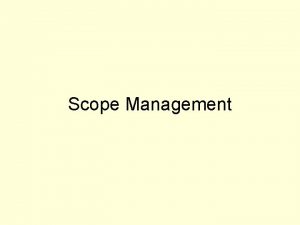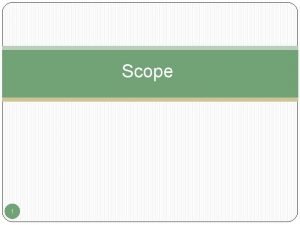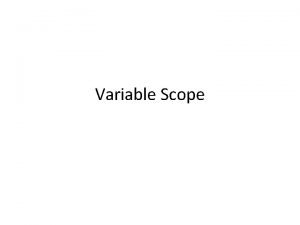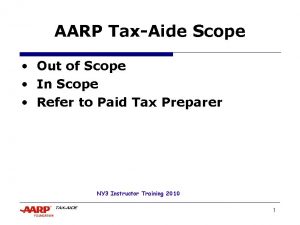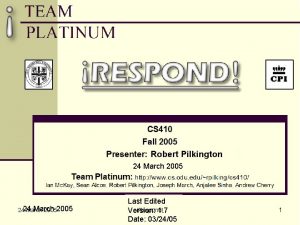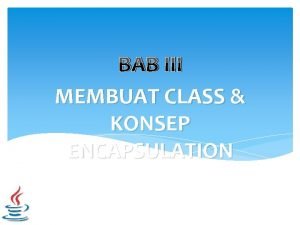ECE 122 March 22 2005 Scope Encapsulation Encapsulation













- Slides: 13

ECE 122 March 22, 2005

Scope

Encapsulation • Encapsulation is a feature of object-oriented world. • We don’t want to put a million lines of code in the main method to solve a large complex problem. It is too complex to comprehend and difficult to delegate to a team of programmers to solve it. • We want to dissect the real world problem into lots classes/objects, then model a real world problem as object interactions.

Encapsulation • Each class/object has limited functionality and complexity and can be delegated to a single programmer who can develop easily without knowing the details of other classes/objects. • Each class/object needs to publish its interface by declaring its public methods. • Object interacts with each other through calling each other’s public interface. • The data (variables) within each class/object is the implementation details that should be hidden from other classes/objects.

Encapsulation • The implementation details of a class/object are the data members and certain methods that are internal to the class/object. They are used to implement the functionalities of the class/object. These information should be hidden from the other classes/objects. We achieve this encapsulation by declare them private.

Encapsulation • Encapsulation reduces the complexity of solving a large complex real world problems. • Encapsulation is one of the core concept of object-oriented approach.

Apply Encapsulation Principle in Object Oriented Design • Each class is designed to be a specific identity or to provide a specific service. • It exposes certain methods by declaring them public. Other classes/objects can interact with this class/object only through its public methods. • Declare all data members private. The data are the class/object’s internal implementation details that others don’t care. • Use public access methods when necessary.

Example of Object-oriented Design • Consider such a problem. The goal is to create a program that can rank two vehicles by their range with a full fuel tank.

How many classes do I need? • I need a Vehicle class that will take care of all the details relating Vehicle. After initializaiton, a vehicle object should be able to calculate its range. • I need a Ranking class that knows how to do the comparison of ranges. It doesn’t need to know how a vehicle calculates its range, because that’s Vehicle’s implementation details. • That’s all I need.

Rewrite Vehicle class with encapsulation principle • Add constructor with parameters list. The vehicle object will be well constructed after operator “new”. • Declare all variables private. • Add one public access method. • Publish a method called “range()”, which will tell the method caller the range of this vehicle. • Delete methods not used. • Call this new class Vehicle 1

Add a new class Rank. Vehicle 1 class • This class has a method, compare. Range(. . ), which can compare the range of two vehicles. • This method doesn’t know how to calculate the range of each vehicle. So it will query each Vehicle 1 object for its range. It does so by calling “range()” method of each Vehicle 1 object. • It doesn’t care about the private variables of each Vehicle 1 object, nor how “range()” method is implemented. • It interacts with Vehicle 1 object through its published interface, public method, “range()”.

Demo with Eclipse

Assignments • Practice and understand Constructor. java, Vehicle 1. java, Rank. Vehicle 1. java • Read “Head First Java” Chapter 4, Chapter 9, p 270 -278 • Read “Java 2” P 195 -210







